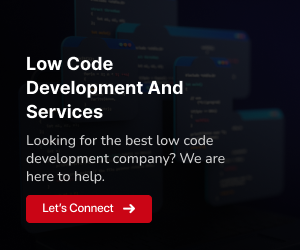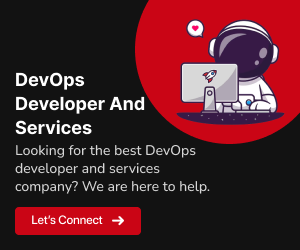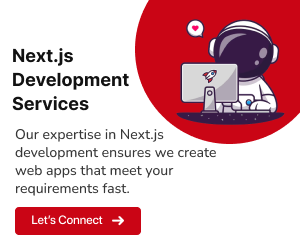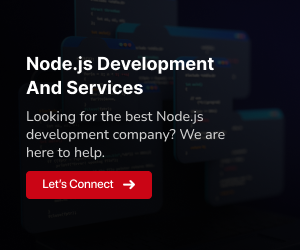Discover the current demand for Flutter app developers in the USA. Explore job opportunities, market trends, and the future outlook for Flutter developers.
The Flourishing Demand for Flutter App Developers in the USA
In today’s rapidly evolving technological landscape, the demand for skilled app developers in the USA has reached unprecedented levels. Within this dynamic industry, one framework stands out: Flutter, developed by Google. This article explores the surging demand for Flutter app developers in the USA, delving into the driving factors and the promising opportunities this versatile framework presents. Mobile applications have become an integral part of daily life, powering businesses and enhancing user experiences. As organizations strive for seamless cross-platform functionality, Flutter’s ability to create natively compiled apps for mobile, web, and desktop from a single codebase has positioned it at the forefront of the development world.
To delve deeper into various avenues for hiring Flutter developers and to steer clear of common hiring pitfalls, explore our comprehensive blog: Hiring a Flutter App Developer in the US: Common Mistakes to Avoid While Remote Hiring
Unlocking the Potential: What Makes Flutter So Great
Flutter, Google’s brainchild, has been gaining rapid traction in the world of mobile app development, and for good reason. This dynamic framework offers a multitude of advantages that set it apart from the competition.
Expressive UI:
Flutter empowers developers to craft visually stunning and highly customizable user interfaces. Its extensive library of pre-designed widgets allows you to create the exact look and feel you desire, while the flexibility to design custom widgets lets your creativity run wild.
Fast Development:
With Flutter’s “hot reload” feature, you can witness the results of your code changes instantly, reducing development time significantly. This iterative development process makes coding more efficient and enjoyable.
Single Codebase:
Write your app’s code once and deploy it across multiple platforms. Flutter’s single codebase approach simplifies maintenance, ensuring consistent performance and functionality across different devices.
Native Performance:
Flutter’s secret sauce lies in its ability to compile to native ARM code, offering near-native performance on both iOS and Android platforms. Users enjoy smooth, responsive apps without lag.
Vibrant Ecosystem:
Flutter boasts a thriving ecosystem of packages and plugins that simplify complex tasks. Whether it’s integrating APIs, adding animations, or working with databases, Flutter has a solution.
Open Source:
As an open-source framework, Flutter benefits from continuous development and improvement by a global community of passionate developers. It’s always up-to-date with the latest features, enhancements, and support.
Robust Documentation:
Google provides comprehensive documentation and resources for Flutter, making it accessible to developers at all skill levels. Tutorials, guides, and examples abound to help you get started and become a Flutter pro.
Flutter’s unique combination of speed, flexibility, and native performance positions it as a top choice for developers aiming to deliver exceptional mobile app experiences.
Flutter vs. React Native vs. Xamarin: A Comprehensive Comparison
In the dynamic landscape of cross-platform mobile app development, three prominent frameworks—Flutter, React Native, and Xamarin—offer distinct features, advantages, and limitations. This comprehensive analysis aims to provide valuable insights to guide your choice for upcoming mobile app development projects.
Flutter:
Advantages:
Expressive UI:
Flutter employs a widget-based approach, enabling the creation of highly expressive and customizable user interfaces, ensuring precise design representation.
Exceptional Performance:
Flutter’s compilation of native ARM code results in high-performance mobile apps, making it an excellent choice for speed-centric applications.
Hot Reload:
The inclusion of Flutter’s hot reload feature allows real-time code changes, leading to instant UI updates and enhancing developer productivity.
Single Codebase:
Simplify your development process by writing code once and deploying it across multiple platforms, reducing development time and ensuring uniformity.
Rich Ecosystem:
Flutter’s ecosystem is rapidly expanding, offering a wide array of packages and plugins catering to various functionalities and requirements.
Features:
Expressive Widgets:
Flutter provides a vast library of customizable widgets for crafting intricate and engaging user interfaces.
Platform-Aware Widgets:
Widgets in Flutter adapt their look and feel to match the target platform, ensuring a native-like experience.
Native Performance:
By compiling native ARM code, Flutter apps achieve exceptional speed and responsiveness.
React Native:
Advantages:
Vast Community:
React Native boasts a substantial and dynamic community, providing an extensive pool of resources and third-party libraries for developers.
JavaScript:
Developers with expertise in JavaScript can leverage their existing knowledge to construct mobile applications efficiently.
Quick Development:
React Native facilitates swift development through its hot reload feature and a collection of pre-built components.
Native Modules:
Access native modules as needed, ensuring flexibility for implementing platform-specific functionality.
Features:
Reusable Components:
React Native promotes the creation of reusable components that can be shared across different parts of an application.
Code Reusability:
A significant portion of React Native code can be reused between iOS and Android versions of an app, streamlining development.
Third-Party Integrations:
React Native allows seamless integration of third-party plugins and libraries, expanding the functionality of your app.
Xamarin:
Advantages:
Single Codebase:
Xamarin enables developers to compose code once and deploy it seamlessly on both iOS and Android platforms, reducing effort and time investment.
Strong Microsoft Backing:
As a Microsoft product, Xamarin benefits from robust corporate support and seamless integration with Microsoft services.
Access to Native APIs:
Xamarin offers outstanding access to native APIs, ensuring flexibility for integrating platform-specific functionality.
Shared Code:
With Xamarin, a significant portion of code can be shared between platforms, resulting in substantial reductions in development time.
Features:
Xamarin Forms:
Xamarin provides Xamarin Forms, a UI toolkit for creating native user interfaces across platforms using a single codebase.
.NET Ecosystem:
Developers can leverage the extensive .NET ecosystem, including libraries and tools when working with Xamarin.
Direct Access to Native Libraries:
Xamarin allows direct access to native libraries and SDKs, providing full control when needed.
Disadvantages:
Complex Setup:
Setting up Xamarin may be more intricate in comparison to some other frameworks, demanding additional configuration.
Learning Curve:
Developers may need to acquaint themselves with platform-specific development aspects, which could involve a learning curve.
Community Edition Limitations:
The free Community Edition of Xamarin comes with limitations, while the fully-featured version may entail a considerable cost.
Flutter App Developer Demand and Salaries in the USA:
The demand for skilled Flutter app developers in the United States has been on a significant rise in recent years. This surge in demand can be attributed to several factors that make Flutter an attractive choice for mobile app development:
Cross-Platform Development:
Flutter’s ability to create cross-platform apps with a single codebase appeals to businesses looking to reach both iOS and Android users efficiently.
Expressive UI:
Flutter’s expressive and customizable user interfaces are in high demand as businesses aim to create visually stunning and user-friendly apps.
High Performance:
Businesses prioritize performance, and Flutter’s native compilation to ARM code ensures fast and responsive mobile apps.
Rapid Development:
Flutter’s hot reload feature accelerates app development, making it appealing for companies looking to release their apps quickly.
Cost-Efficiency:
With a single codebase for multiple platforms, Flutter development can be more cost-effective, further increasing its demand.
This high demand for Flutter app developers is reflected in competitive salaries across different designations in the field. Here’s a glimpse of average annual salaries for various Flutter app developer roles in the USA:
Flutter Developer (Entry-Level):
Average Salary: $60,000 – $80,000 per year
Flutter App Developer (Mid-Level):
Average Salary: $80,000 – $110,000 per year
Senior Flutter Developer:
Average Salary: $110,000 – $150,000+ per year
These salary ranges are indicative and can vary based on factors such as experience, location, and the specific company’s compensation package. As the mobile app ecosystem continues to expand, the demand for Flutter developers and competitive salaries are expected to remain robust.
If you’re interested in becoming a Flutter developer in the USA, check out our blog: How to Become a Flutter App Developer in the USA. It’s a comprehensive guide to kickstart your career in this exciting field.
Closing Thoughts on the Flourishing Demand for Flutter Developers in the USA
In conclusion, the demand for Flutter developers in the USA is on a remarkable upswing. Flutter, with its capacity to rapidly create high-performance, visually stunning applications across platforms, has captured the attention of both businesses and developers. As the mobile app landscape continues to evolve, mastering Flutter offers an exciting avenue for those looking to thrive in the world of app development. Whether you’re an experienced developer or just beginning your journey, exploring Flutter can open doors to promising career opportunities in the ever-expanding realm of mobile app development. Stay updated, keep honing your Flutter skills, and be ready to ride the wave of cross-platform app development in the USA.
Demand of Flutter Developers in the USA – Frequently Asked Questions (FAQ)
Q1: What is Flutter, and why is it gaining popularity in the USA?
A1: Flutter is an open-source UI framework developed by Google. Its popularity in the USA is primarily due to its ability to create cross-platform mobile apps with a single codebase, resulting in cost-effective and efficient development.
Q2: Is there a high demand for Flutter developers in the USA?
A2: Yes, there is a significant demand for Flutter developers in the USA. Many businesses are adopting Flutter for mobile app development, leading to a surge in job opportunities.
Q3: What are the typical job roles for Flutter developers in the USA?
A3: Job roles for Flutter developers in the USA include Flutter Developer, Mobile App Developer (Flutter), Front-End Developer (Flutter), and UI/UX Designer (Flutter).
Q4: What is the salary range for Flutter developers in the USA?
A4: The salary range for Flutter developers in the USA varies based on experience and location. On average, junior Flutter developers can earn around $70,000 to $90,000 per year, while senior developers can earn well over $120,000 per year.
Q5: Do I need prior mobile app development experience to become a Flutter developer in the USA?
A5: Prior mobile app development experience can be beneficial but is not always necessary. Flutter’s ease of use and extensive documentation make it accessible for developers from various backgrounds.
Q6: How can I become a Flutter developer in the USA?
A6: To become a Flutter developer in the USA, you can start by learning Dart, the programming language used for Flutter. Then, explore Flutter’s documentation and tutorials. Building your portfolio with Flutter projects is essential.
Q7: What is the future outlook for Flutter developers in the USA?
A7: The future for Flutter developers in the USA looks promising. As more businesses choose Flutter for app development, the demand for skilled Flutter developers is likely to continue growing.



















